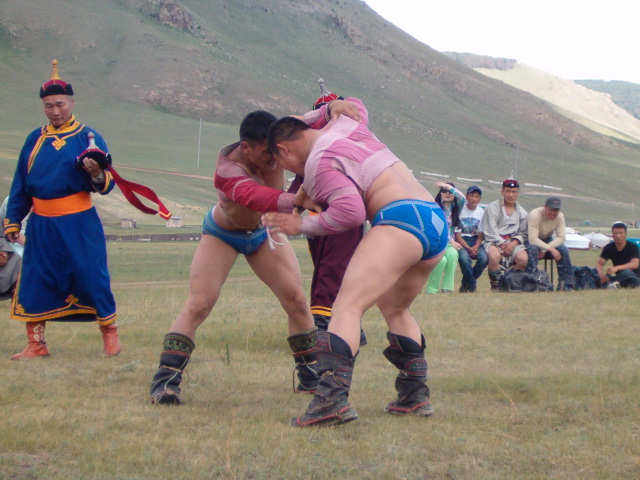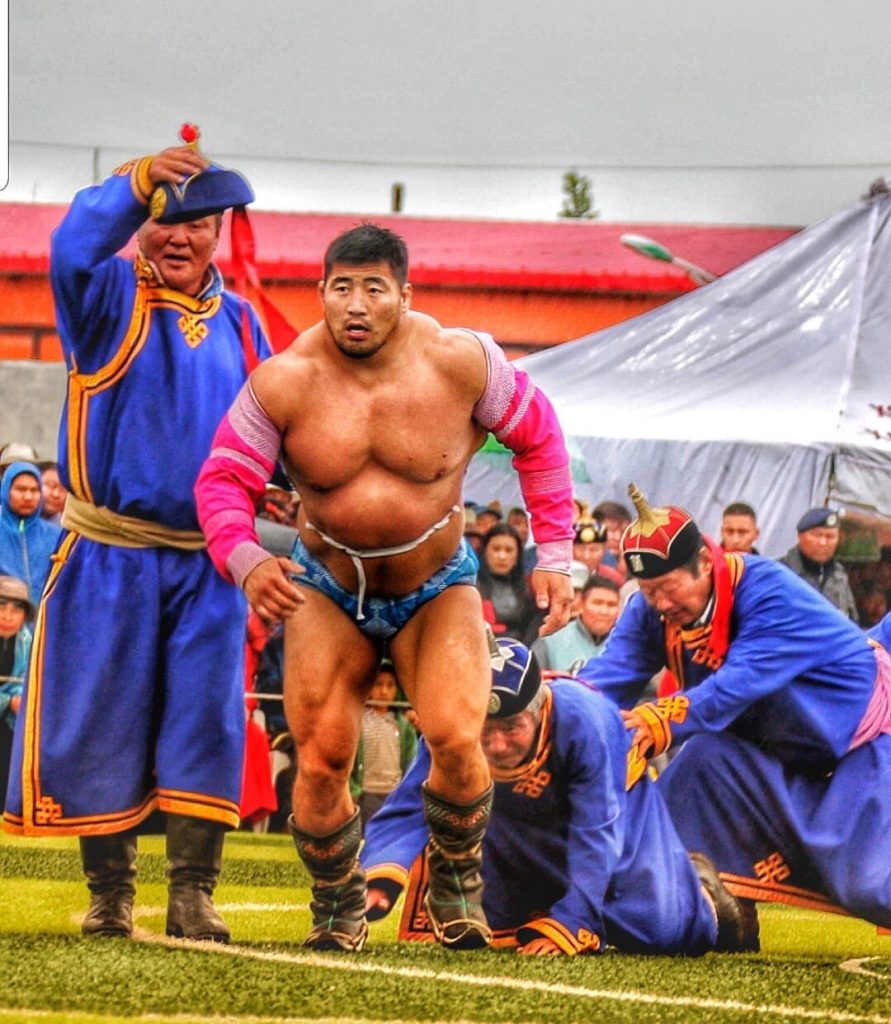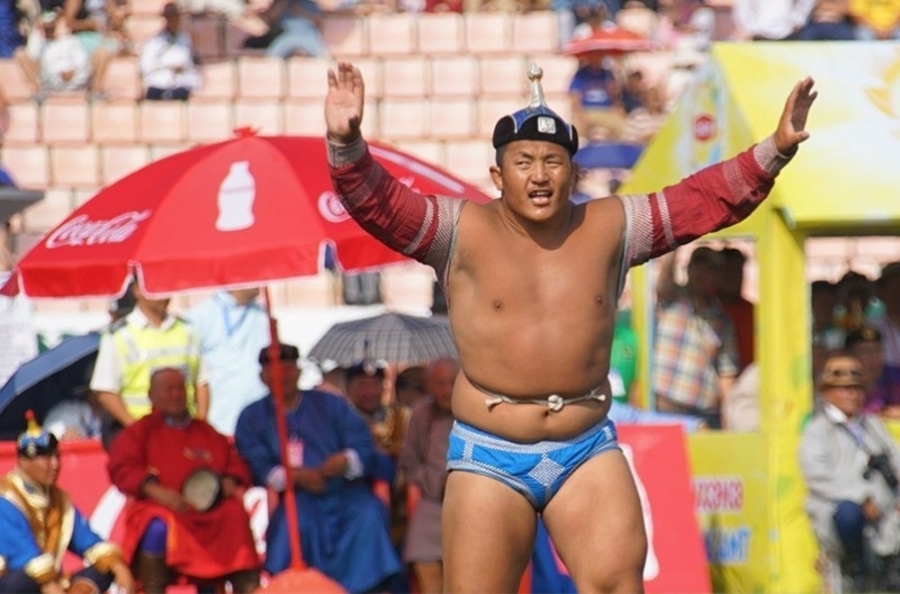This summer we led our inaugural tour to Mongolia’s Naadam Festival and were privileged enough to see what are traditionally known as the ‘three manly games’ – archery, horse racing, and Mongolian wrestling.
In the spirit of equality and not excluding people because of their genitals, two of these games are no longer quite as manly and permit women to take part. One, however, is still flying the testosterone flag, and that is Mongolian wrestling.
Ladies, gentlemen and everyone else, we present to you: the YPT guide to Mongolian wrestling.
What is Mongolian wrestling?

Mongolian wrestling – or bökh, in the local parlance – is a very simple take on the sport. If your knee, elbow or torso touches the ground, you’re out. There’s no striking, strangling or locks permitted, but other than that it’s game on. There are no weight or age classes, and there are no time limits. This means that it’s not uncommon to see the David-versus-Goliath scenario of a toddler wrestling a grown man.
Who can compete in Mongolian wrestling?

As noted above – pretty much anybody! There tend to be two kinds of favoured builds, however:
The Andre the Giant: your bigger, thicker wrestler who wins through being a giant bastard that can’t be easily toppled.
The Rey Misterio: the smaller chap whose lithe frame lends itself to acts of trickery and lightning-fast manoeuvres.
How does wrestling work in the Naadam tournament?
512 wrestlers complete in a single-elimination tournament over eight rounds, with the last one left being the champion.
This being Mongolia, they’ve got some pretty badass names depending on how far a wrestler gets. ‘Falcon’, ‘elephant’, ‘lion’ and ‘titan’ are the titles from lowest to highest, but the champion can add even more epithets to his title by winning past the championship, possibly eventually becoming ‘the almighty and most masculine titan who shall never be felled long as he draws breath and also has a super huge schlong’. For instance.
Mongolian wrestling: rituals and sportsmanship
Mongolian wrestling is a sport that stretches back around a millennium, so naturally there are a lot of rituals and unwritten rules associated with the sport.
At the opening of the Naadam, all the wrestlers engage in an Eagle Dance, which is sorta like a North Asian haka. Eagles are kind of a big thing in Mongolia, and much is made of emulating these majestic raptors.
This adulation and emulation of the eagle extends to the wrestling bouts, where wrestlers perform eagle dances before and after their matches. The losers also pass under the outstretched arm-wings of the victor as a mark of respect.
Sportsmanship is also a big deal in Mongolian wrestling – even more important than winning. If a wrestler’s clothing gets tangled or out of whack, his opponent is expected to immediately stop and help him out. This unspoken rule applies even if it compromises a strong chance at victory.
What are the ‘uniforms’ of Mongolian wrestling?

Mongolian wrestlers all wear the same kind of clothing:
- Zodog: a tight, collarless waistcoat-style top, fastened at the back and open at the front. Legend has it that a woman once infiltrated a wrestling competition and won it, only revealing her insufficiently masculine nature at the end by tearing open her top and revealing her breasts. Since then, all wrestlers are required to show their chests, because Heavens forfend a woman spoil the fun.
- Shuudag: tight-fitting briefs made of red or blue cotton. Deliberately kept short so that the opponent cannot easily get a hold and the wrestler cannot easily get entangled and trip in his own clothes.
- Gutal: leather boots with either traditional upturned toes or flat Western-style ones.
How can I see the wrestling for myself!
Nice and easy – simply sign up for our next tour to the Naadam Festival!





